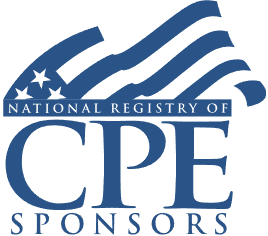GILTI High Tax Exclusion Final Regulations: Tested Units, Controlled CFC Groups

Welcome! Strafford is now BARBRI! The expert courses you know from the trusted global leader in legal education.
Course Details
- smart_display Format
On-Demand
- signal_cellular_alt Difficulty Level
Intermediate
- work Practice Area
Tax Preparer
- event Date
Thursday, August 3, 2023
- schedule Time
1:00 p.m. ET./10:00 a.m. PT
- timer Program Length
110 minutes
-
BARBRI is a NASBA CPE sponsor and this 110-minute webinar is accredited for 2.0 CPE credits.
-
BARBRI is an IRS-approved continuing education provider offering certified courses for Enrolled Agents (EA) and Tax Return Preparers (RTRP).
This course will provide CFC shareholders and tax professionals with a comprehensive understanding of the final global intangible low-taxed income (GILTI) High Foreign Tax Exclusion Regulations (T.D. 9902). Our panel of international tax experts will explain how the final regulations change the originally proposed regulations and how the newly issued proposed regulations (released with the final regulations) would combine the GILTI and Subpart F High Foreign Tax Exceptions into a single, unitary election.
Faculty

Mr. Chesman has broad experience in federal, state, and international taxation, including consulting, compliance, and audit, with particular emphasis on structuring domestic and cross-border mergers and acquisitions, spin-off transactions, post-merger integrations, debt restructurings, bankruptcy workouts, and application of the consolidated return regulations.

Mr. Skinner focuses his practice on U.S. international taxation, with a particular emphasis on tax planning and international corporate transactions. He has broad experience in international tax issues for U.S. corporations, foreign corporations, and high net-worth individuals, and has represented clients across a variety of industries. He teaches international taxation as an adjunct professor in San Jose State University’s MST program, and speaks and writes frequently on international and corporate tax issues.
Description
Simply put, the final GILTI High Foreign Tax Exclusion Regulations under IRC Section 951A permit a U.S. taxpayer to elect to exclude from its inclusion of GILTI items of income subject to a high effective rate of foreign tax. Under the final regulations, income is viewed as subject to a high rate of foreign tax if the effective foreign rate exceeds 90 percent of the highest U.S. corporate income tax rate then in effect during the relevant year (i.e., greater than 18.9 percent, assuming the highest relevant U.S. corporate income tax rate then in effect is 21 percent). Once the exclusion election is made, it applies to all "related" CFCs under a consistency requirement.
Most aspects of the final regulations follow the original proposals. There are, however, striking differences. For example, the final regulations dispose of the qualified business unit (QBU) as a metric and instead apply the exclusion based on newly defined "tested units" of a foreign corporation. This standard is intended to more accurately match foreign taxes to items of income and minimize the inappropriate blending of income items subject to different foreign tax rates.
With the final regulations, proposed regulations were released under IRC Section 954(b)(4) (REG-127732-19) that conform the Subpart F Income "High-Tax Exception" to the finalized GILTI High Tax Exclusion. Applying that exception on a tested-unit basis would similarly minimize blending of items of income subject to different rates of foreign tax and more generally result in greater Subpart F Income inclusions. If and when finalized, a unitary election would apply for purposes of both the GILTI High Tax Exclusion and the Subpart F Income High Tax Exception.
On the upside, the final regulations allow an annual election rather than the five-year binding election originally proposed in 2019. On the downside, the election is an all or none election for certain commonly controlled CFCs.
One thing is certain: businesses and their advisers now need to undertake massive calculations and carefully analyze their existing tax postures and effective foreign tax rates to take full advantage of the tax-saving opportunities presented by these final GILTI High Tax Exclusion Regulations.
The benefits of foreign tax credits, combining CFCs, weighing Subpart F vs. GILTI taxation, understanding tested units, and deciding whether to apply the final regulations retroactively are just a few of many challenges to consider when implementing these rules. The final regulations have important implications for the Subpart F Income High Tax Exception under Section 954(b)(4), upon which the GILTI High Tax Exclusion rules were founded.
Listen as our panel of international taxation experts guides you through the major considerations of the GILTI High Tax Exclusion Regulations, including hands-on examples calculating and applying the GILTI HTE rules, when and how to apply the final regulations retroactively, and when forgoing this election may minimize overall tax liability.
Outline
- Background and tax policies underlying the application of the longstanding Subpart F Income High Foreign Tax Exception, and the new GILTI High Foreign Tax Exclusion
- Final July 2020 regulations
- Modifications from the 2019 proposed regulations
- Calculations and examples
- Retroactive elections
- July 2020 proposed regulations
- Planning opportunities
- Avoiding tax pitfalls
Benefits
The panel will review these and other important issues:
- How to calculate whether income is subject to a high effective foreign tax rate
- Understanding the ramifications of the "consistency" requirement
- When is it best to forgo the election to exclude high-taxed income?
- What savings opportunities exist before the effective date of the proposed regulations?
- What is a testing unit?
- Which taxpayers should apply the regulations retroactively?
- How does the use of foreign tax credits impact the decision to elect the exclusion?
- How is the Subpart F Income High Tax Exception impacted by these final regulations?
NASBA Details
Learning Objectives
After completing this course, you will be able to:
- Verify how to calculate whether income is subject to a high effective foreign tax rate
- Ascertain how final and proposed regulations impact the Subpart F Income High Tax Exception
- Identify GILTI and its interaction with Subpart F
- Decide whether an IRC 962 election is beneficial or could result in a tax increase
- Determine what qualifies as a "testing unit"
- Understand the reporting requirements of Form 5471, Schedule J
- Field of Study: Taxes
- Level of Knowledge: Intermediate
- Advance Preparation: None
- Teaching Method: Seminar/Lecture
- Delivery Method: Group-Internet (via computer)
- Attendance Monitoring Method: Attendance is monitored electronically via a participant's PIN and through a series of attendance verification prompts displayed throughout the program
- Prerequisite: Three years+ business or public firm experience preparing complex tax forms and schedules, supervising other preparers or accountants. Specific knowledge and understanding of international taxation including residency determination, foreign entity classifications, application of treaty benefits, as well as GILTI, Subpart F, and the related Section 250 deductions.

Strafford Publications, Inc. is registered with the National Association of State Boards of Accountancy (NASBA) as a sponsor of continuing professional education on the National Registry of CPE Sponsors. State boards of Accountancy have final authority on the acceptance of individual courses for CPE Credits. Complaints regarding registered sponsons may be submitted to NASBA through its website: www.nasbaregistry.org.

Strafford is an IRS-approved continuing education provider offering certified courses for Enrolled Agents (EA) and Tax Return Preparers (RTRP).
Unlimited access to premium CLE courses:
- Annual access
- Available live and on-demand
- Best for attorneys and legal professionals
Unlimited access to premium CPE courses.:
- Annual access
- Available live and on-demand
- Best for CPAs and tax professionals
Unlimited access to premium CLE, CPE, Professional Skills and Practice-Ready courses.:
- Annual access
- Available live and on-demand
- Best for legal, accounting, and tax professionals
Unlimited access to Professional Skills and Practice-Ready courses:
- Annual access
- Available on-demand
- Best for new attorneys
Related Courses

Redemptions of Partnership Interests: Sections 736(b) vs. 736(a)
Friday, October 31, 2025
1:00 p.m. ET./10:00 a.m. PT

Multistate Tax Treatment of Multi-Tier Partnerships: Ingesting PTET in a Multi-Tier Entity
Friday, September 19, 2025
1:00 p.m. ET./10:00 a.m. PT

IRA Distributions and RMDs: Minimizing Taxes and Meeting SECURE 2.0 Requirements
Available On-Demand

Avoiding Gift and Estate Audit Triggers: Anticipating Audit Issues, IDRs, and Appeals
Tuesday, September 9, 2025
1:00 p.m. ET./10:00 a.m. PT
Recommended Resources
How CPE Can Bridge the Gap Between What You Know and What You Need to Know
- Career Advancement